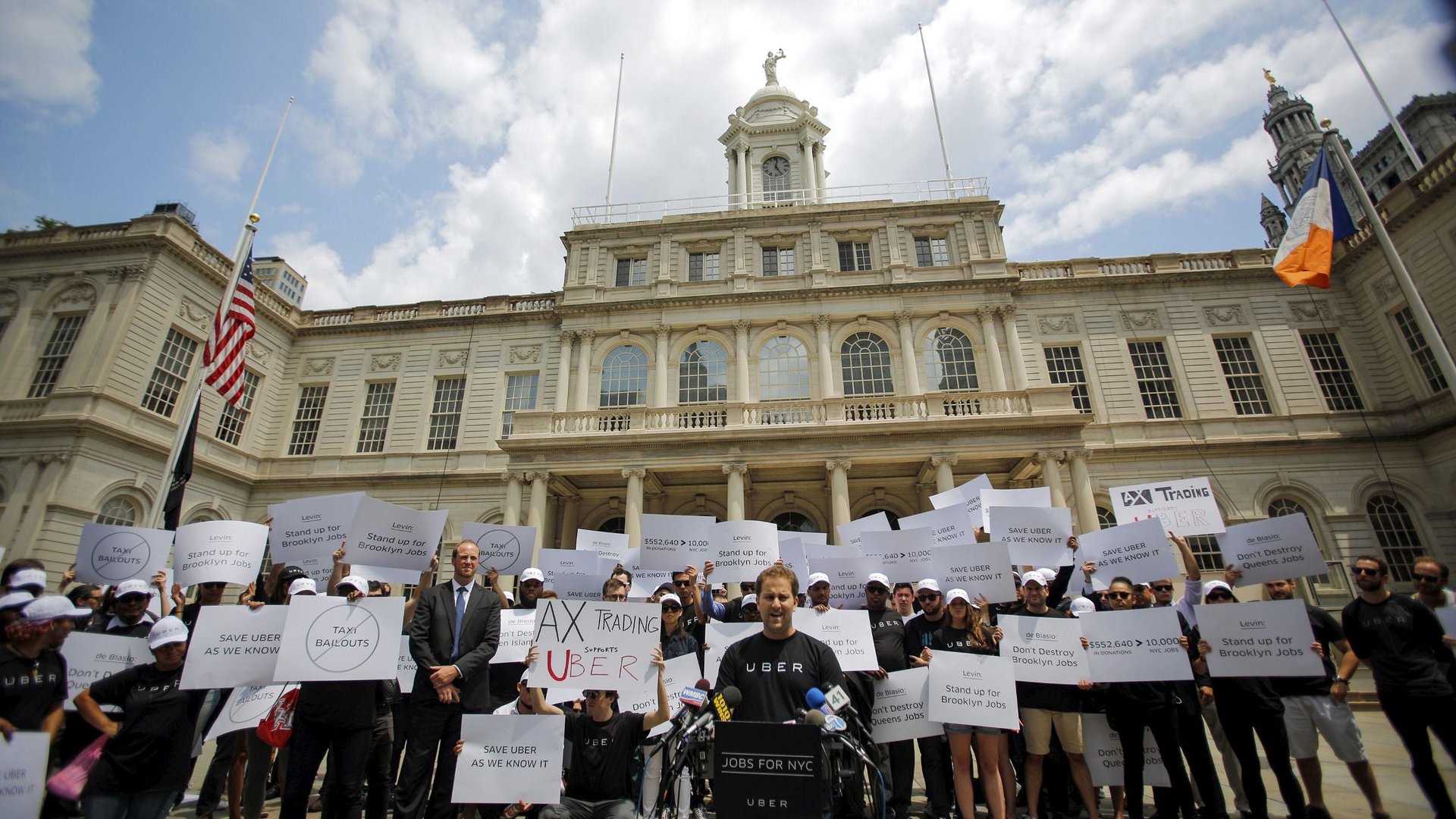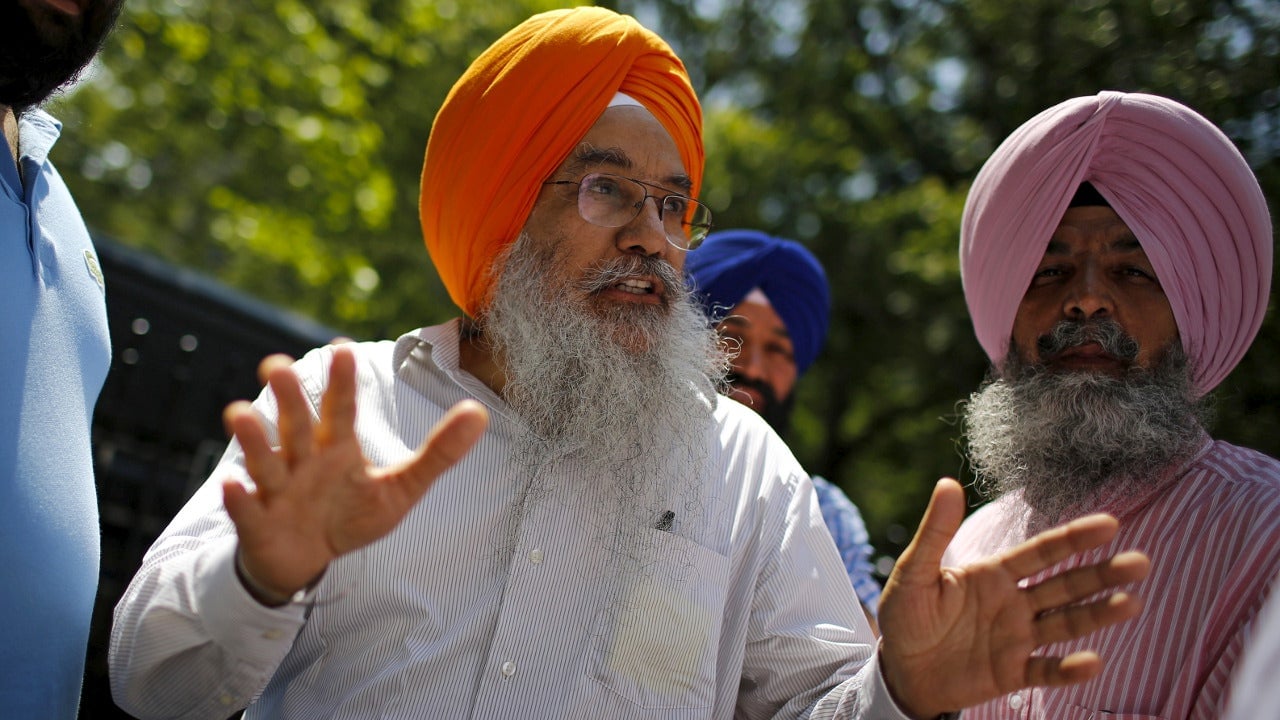The latest round in Uber’s battle for New York City, explained
New York City is learning from New Jersey when it comes to traffic studies: They’re one way to play political hardball.


New York City is learning from New Jersey when it comes to traffic studies: They’re one way to play political hardball.
That’s the game that Uber is accusing New York’s city council of playing, as it considers a proposal to temporarily halt the rapid growth of car-service platforms like Uber’s while the city studies the environmental and traffic impact of having more livery cabs on the road.
The primary sponsor of the proposal, council member Ydanis Rodriguez, says that just 23,000 for-hire cars have been added to the streets since 2011, but that due to all the hours they spend on the road, the increase is the equivalent to 920,000 New Yorkers buying a car.
Josh Mohrer, Uber’s general manager in New York City, disagrees, noting that 2.7 million cars enter the city center each day—the entire Uber fleet, he says, makes up less than 1% of that total. He also says the freeze would stop Uber from creating 10,000 jobs in the next year (not Uber jobs, per se, as the company doesn’t consider its drivers to be employees, but jobs nonetheless). The company, reportedly valued by investors at $50 billion, offered free rides and free lunch to anyone who would come protest outside City Hall today (June 30) during a council hearing on the freeze.
Mohrer argues that the city’s politicians, including Rodriguez and mayor Bill de Blasio, are merely providing a political reward to their contributors in the taxi industry. De Blasio in particular received significant funding from the industry, and also moved to limit other increases in the number of cabs on the street.
“We are facing 2,000 more cars coming onto our streets every month—overwhelmingly in the most congested and crowded areas of Manhattan,” a de Blasio spokesperson told Quartz. “It’s good public policy to temporarily manage that influx of new vehicles so we can fully assess its impact on traffic and air quality. Our global competitors like London are facing the exact same phenomenon, and are responding in the same way. New Yorkers will continue to be well-served during this study period, with access to the most transportation options and the most for-hire vehicles in our city’s history.”
It’s certainly impossible to dispute that Uber has added a significant number of for-hire cars to the New York City market, and that this has crushed the market for the taxi “medallions” that the city auctions off to anyone who who wants to be able to pick up street hails. Their price peaked at $1.2 million in 2013 and has been sinking since.
The City justifies its limit on the number of cabs with concerns about congestion, but the effective public cartel it creates delivers significant rentier benefits to the owners of taxi licenses. That’s one reason consumers in New York City have enthusiastically received Uber: There really was a dearth of cabs, especially in the ill-served outer boroughs of Brooklyn, Queens, and the Bronx.
Still, big-time medallion owners have cried foul, and even demanded bailouts from the city. While the complaints of someone like Gene Friedman, who owns as many as 1,000 medallions worth around $1 billion, may fall on deaf ears, it’s not hard to be sympathetic to smaller victims of the same price distortion.

Gurpreet Singh was one of about a dozen taxi drivers counter-protesting Uber during the demonstration outside City Hall. He told me that he saved up and borrowed to obtain his taxi medallion with the plan of driving for a few decades to pay it off, and then selling the medallion to fund his retirement. Having bought into what they expected to be a straightforward system, he and his colleagues feel cheated now that Uber and other car services have cut the value of their investment by dodging the medallion system entirely.
Across the sidewalk, on the Uber side of the demonstration, driver Moises Abrego-Flores has the opposite story. He came to the US from Mexico in 1974, and could never save enough to afford a taxi medallion. But since he started driving for Uber several months ago, he says he has earned a good income while working fewer hours than at his old jobs. “I say ‘god bless’ for the man who invented Uber,” he said.
As for the taxi drivers down the way, he sympathizes with their predicament, but blames the “big money” for inflating the auction prices of the medallions before they crashed. “Status quo, who has the money…one hand washes the other,”Abrego-Flores says.
Singh and his taxi-driving colleagues know the feeling. “In India, they call it corruption,” he says. “Here, they call it a relationship.”